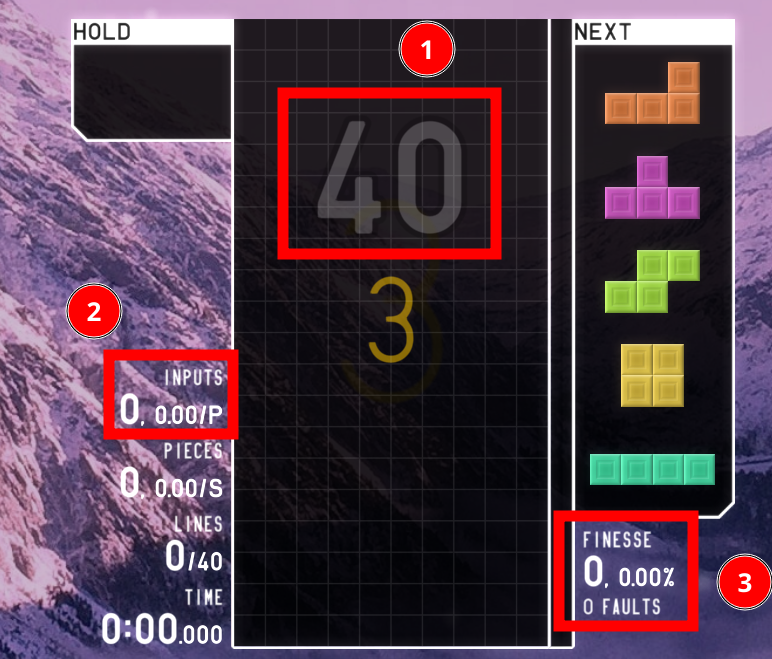Ingame symbolism
Often times, built right into the game itself, TETR.IO demonstrates forms of nondescriptive symbolism around the UI. Here's some definitions surrounding those.
Zen levelszenlevels

A simple illustration showing the relationship between symbols and arabic numerals.
ZEN levels are usually accompanied by little symbols around TETR.IO. These symbols represent the numerical ZEN level in modified roman numerals. There's a graphic detailing them all to the right.
Once the maximum numeral has been attained, which is unlikely to happen as the closest known player is still many thousands of levels off of that goal, it will loop for infinity.
SOLO optionssolo-options
Shortly before beginning a 40 LINES or BLITZ run, you're presented with a couple extra options to toggle to further customize your experience. These toggles mainly effect the game's visuals mechanically speaking, and there is no recommended default the professional players use. For brevity, the toggles regarding "finesse" have been omitted. Please refer to this FAQ entry from Tenchi for more information regarding finesse.

Hover text goes a long way towards avoiding potential confusion such as this. Please take note of it!
PRO MODEpromode
This toggle is much more noticable and useful in 40L. The "extra info" shown and arranged are as follows:

- The amount of remaining lines on the board right here. Not shown if playing BLITZ.
- The total amount of game inputs you've used, as well as inputs per piece.
- Your finesse combo, a percentage of perfect pieces placed, and total faults.
This toggle was implemented before advanced counter configuration was available, but you can replicate these counters that way instead. For example: if the remaining lines counter on the board is too distracting, but the extra information is helpful, or, if you would like to use these counters in a custom SOLO game, then use this:
- Left counter slot 1: STOPWATCH
- Left counter slot 2: LINES
- Left counter slot 3: PIECES
- Left counter slot 4: KEYS
- Right counter slot: FINESSE
STRIDE MODEstridemode
This toggle impacts many of TETR.IO's animations regarding the game state's beginning, ending, and restarts. Most notable is the inclusion of "tap to retry", making retries near-instant to suit the needs of a "strider".
This toggle also impacts:
- Piece generation.
- Mainly, the very first piece cannot be one of the S, Z, or O tetrominoes.
- The time it takes for you to forfeit is lowered.
- The countdown uses two shorter steps before beginning, instead of three longer ones.
Network iconsicons
Depending on the active internet connection, several network icons may flash on the left side of the screen indicating various different active issues with the current connection. Here's a chart listing them all and their descriptions:
If you would like to permanently remove these symbols, you may do so by enabling HIDE NETWORK WARNING ICON under VIDEO & INTERFACE in the CONFIG.
